Artistic Techniques
Artistic techniques of Antonio García Calvente Totom: oil painting, ceramics, watercolors, etchings and watercolors, sculptures, decorations, etc.
Table of Contents
ToggleArtistic techniques of Totom
Antonio was a very prolific artist, who used very different techniques for his creative process. Oil or acrylic painting, ceramics, etchings, sculpture, decorations, etc.
His art was a constant search for expression, color, textures, symbolism and feeling.
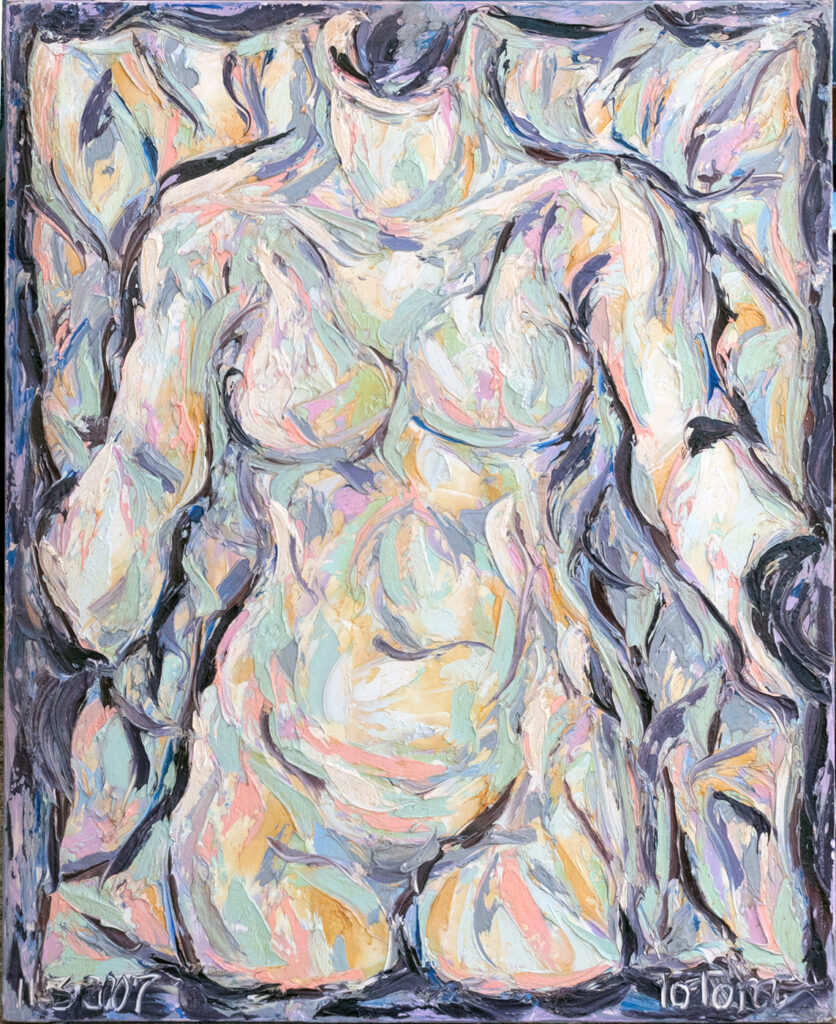
Oils
Pouring awareness on a canvas is not an easy task, what tools do you use to leave everything you are in a quadrilateral? There was a recurring dream in which Antonio first fought to get his mind into the picture, and then surrendered and traveled inward, becoming part of it.
The oil represented him the alchemical primogen oil; in fats he found a powerful, feminine and ancestral color.
His technique with palettes and copious amounts of paint, focused attention on the expression of the symbol.
It was in 1990 when his works abandoned a realistic landscape of life and began to wander between dreams, visions and mystical subjective experiences. The intensity achieved and the lost gaze on the deep, was leading to dissolve more and more the concrete gaze and deliver the intense experience in the transpersonal vision.
Almost all the works exhibited in this gallery are part of the last stage of his life, focusing on the expressive and emotional work of the undeniable lucid experiences.
Artisan Creation of Oil Paintings
In many works, Antonio created his own oil paintings with pigments in the traditional way. A method that creates oil paintings from powdered pigments mixed with linseed oil.
In these Artistic Techniques, the painter layers pigments with linseed oil and turpentine, gently, layer by layer, until a solid and durable base is achieved.
The unique mix of pigments, color and texture will be much more personal and vivid.
With this technique Antonio could create his own oil paintings, more or less dense depending on his intention, and he would use a large part of his works.
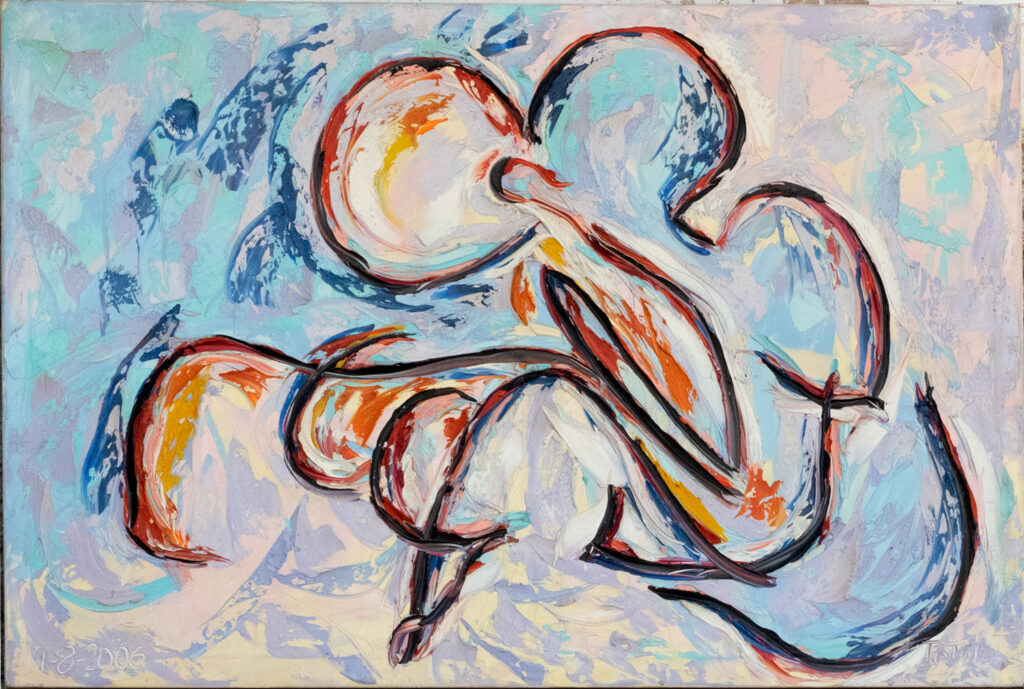

Impasto
Antonio’s work includes a large number of pieces with the impasto technique, with spatulas, palettes and painter’s knives.
The textures and the volume that is generated create a very particular style. Thanks to this technique, in the different layers, Antonio can choose the amount of light that is reflected according to the intention that he wants to convey to us.
The impasto technique generates great expressiveness and strength, and delivers an instantaneous and vivid sensation of the image.
Watercolors
Watercolors are instantaneous, raw, sincere. A moment is enough to connect with them.
Through watercolors, Antonio García Calvente manifests a whole world of expression, textures, colors and shapes that will accompany him for a large part of his artistic career.
It was in 1990 when his works abandoned a realistic landscape of life and began to wander between dreams, visions and mystical subjective experiences. The intensity reached and the look lost in the depth, was leading to dissolve more and more the concrete look and deliver the intense experience in the transpersonal vision.
Almost all the works exhibited in this gallery are part of the last stage of his life, focusing on the expressive and emotional work of the undeniable lucid experiences.
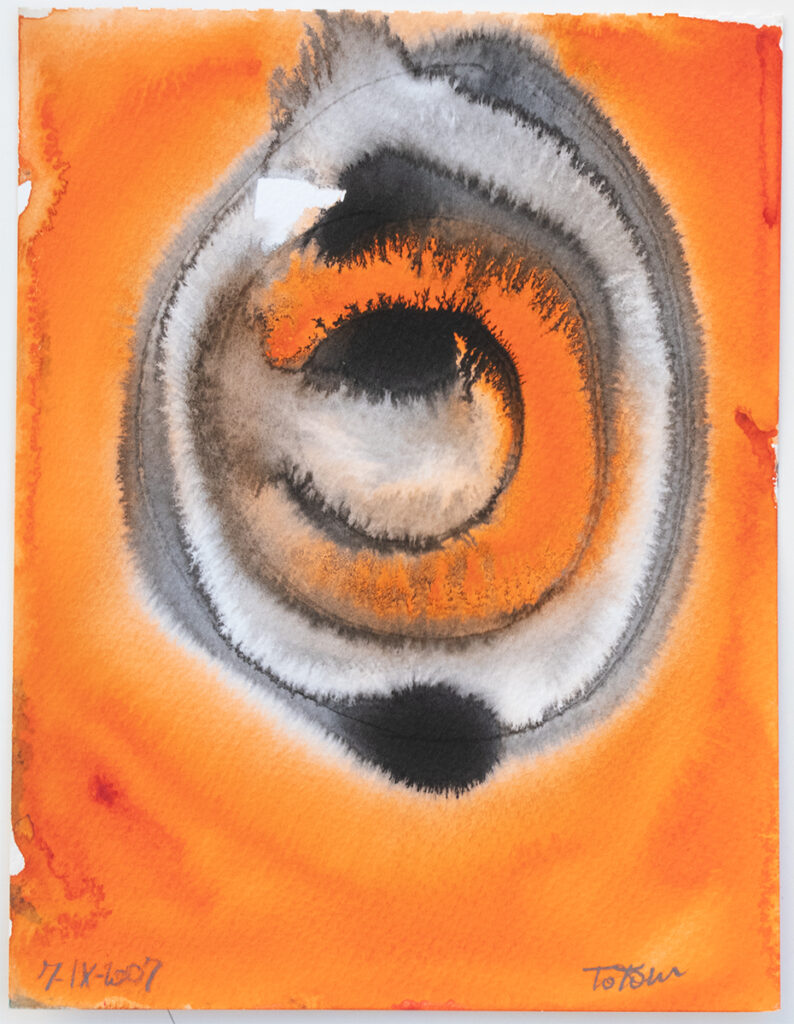

Drawings
Pencil drawings, charcoal, comprise an indispensable part of the artist’s foundations. Antonio García Calvente lived with a notebook and a pencil in his hands by him, sketching the world and seeking a more intuitive, deep, sensitive and transcendental look.
After years of drawings, painting, ceramics, during 1998-2000 he specialized in quick drawings and watercolors, seeking to achieve a meditative state during work, a technique that every artist seeking the Taoist path ends up refining. I tried a deep meditation after which the experience seeks to materialize through the pencil.
Slowly this work was rewarded, and both the drawings, the oil pigmentos and many of his works represent the expression of a fragile and moving sensitive moment.
Engravings etchings
Engravings are a form of printing with textures, essence and quality.
The etching method involves engraving an image on a copper plate, mounting it with inks, and applying it to paper with a press or press. The image is transferred to the paper by creating a finely detailed embossing on the surface of the paper.
Antonio García Calvente, in 1987, found in engraving a very personal technique that would accompany him for the rest of his life.
For decades there was never a lack of an engraving press where he printed the lithographic plates that he engraved himself.
It is an ancient art that requires a laborious and precise process.
One of his whims was to break the metal plates of his own engravings to avoid replicas of his work, for this reason there are currently very few etchings by Antonio, and all of them are very valuable.
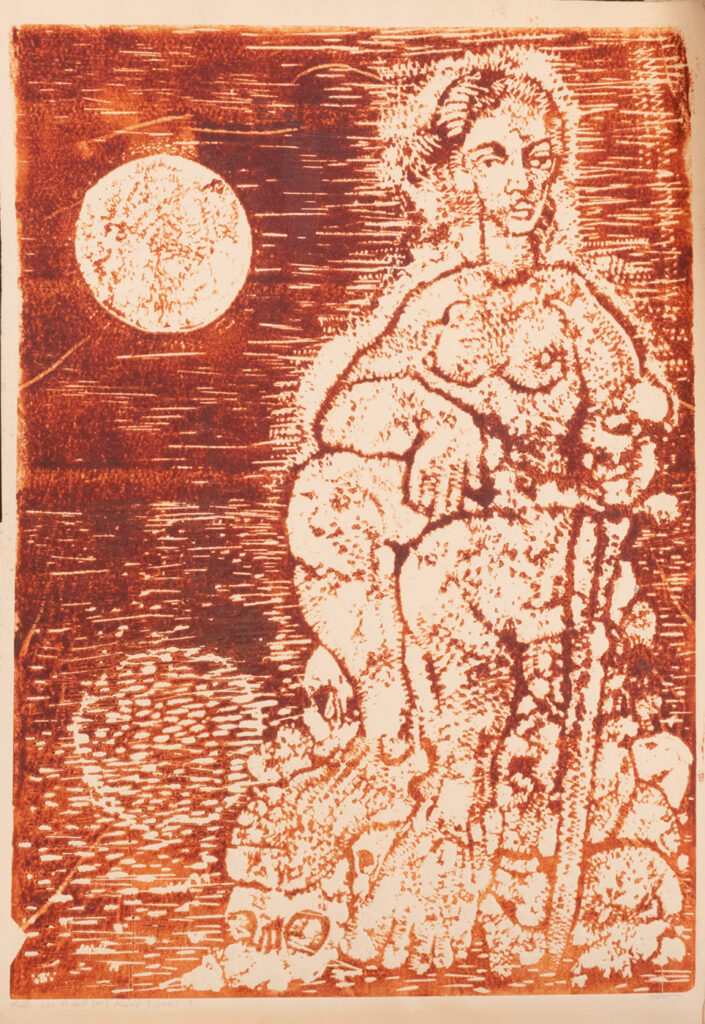
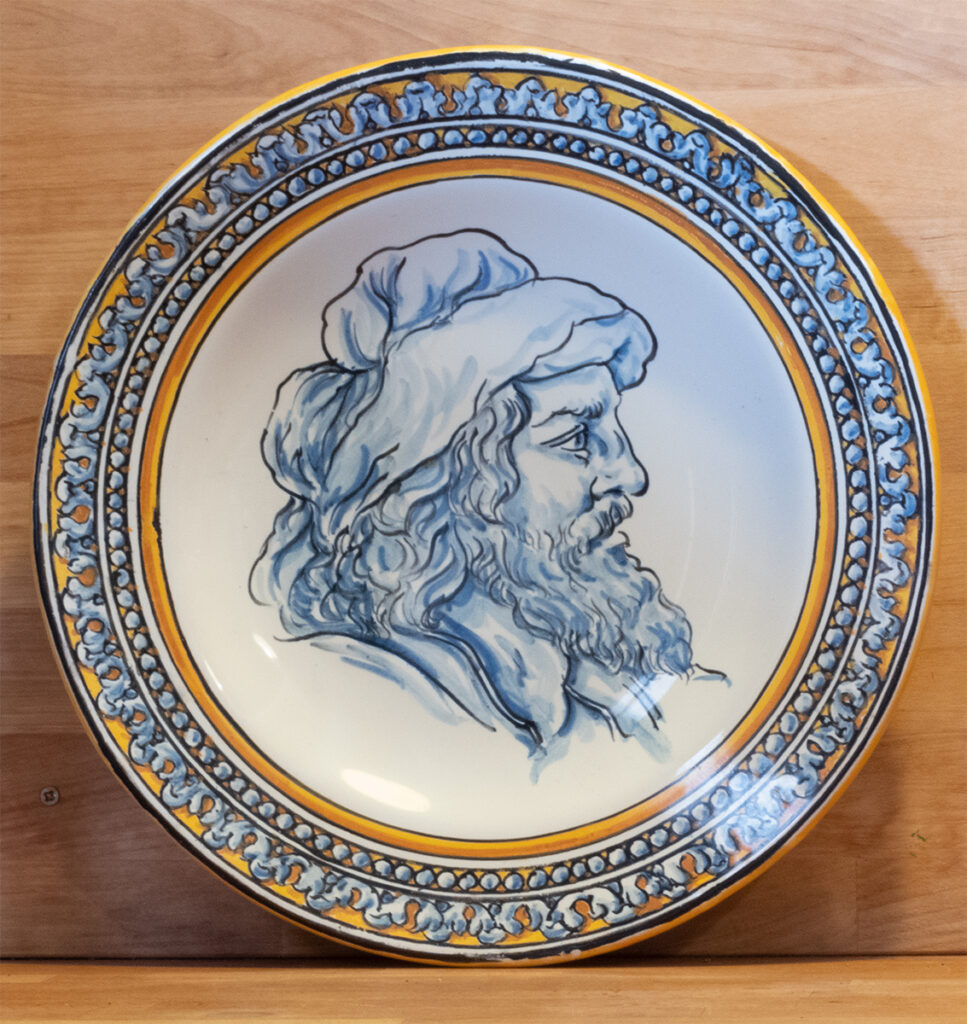
Handmade ceramics
«Letthe fire take away everything you have left over and give you what you lack.»
The sayings of the ceramist are authentic teachings. Ceramics help us understand that first way of creating with materials in humans. Even before woods and metals, clay is kneaded, and soon cooked in the fire.
Alchemy makes sense in pottery, where no matter what one wants, the transformation becomes wild and uncontrolled, revealing the true essence of the artisan.
Under the teaching of the master Felipe Espínola from the «Ruiz de Luna» School, in 1987, Antonio García Calvente undertook a journey as a ceramist that would conclude with some of his latest artistic works.
Scultures
Good sculpture claims to be touched, felt. It has some kind of life that generates a strange and physical magnetism.
The material, the shape, the search for chiaroscuro, are not something as important as that without reason, to caress something that you do not know why but you feel that it is alive.

